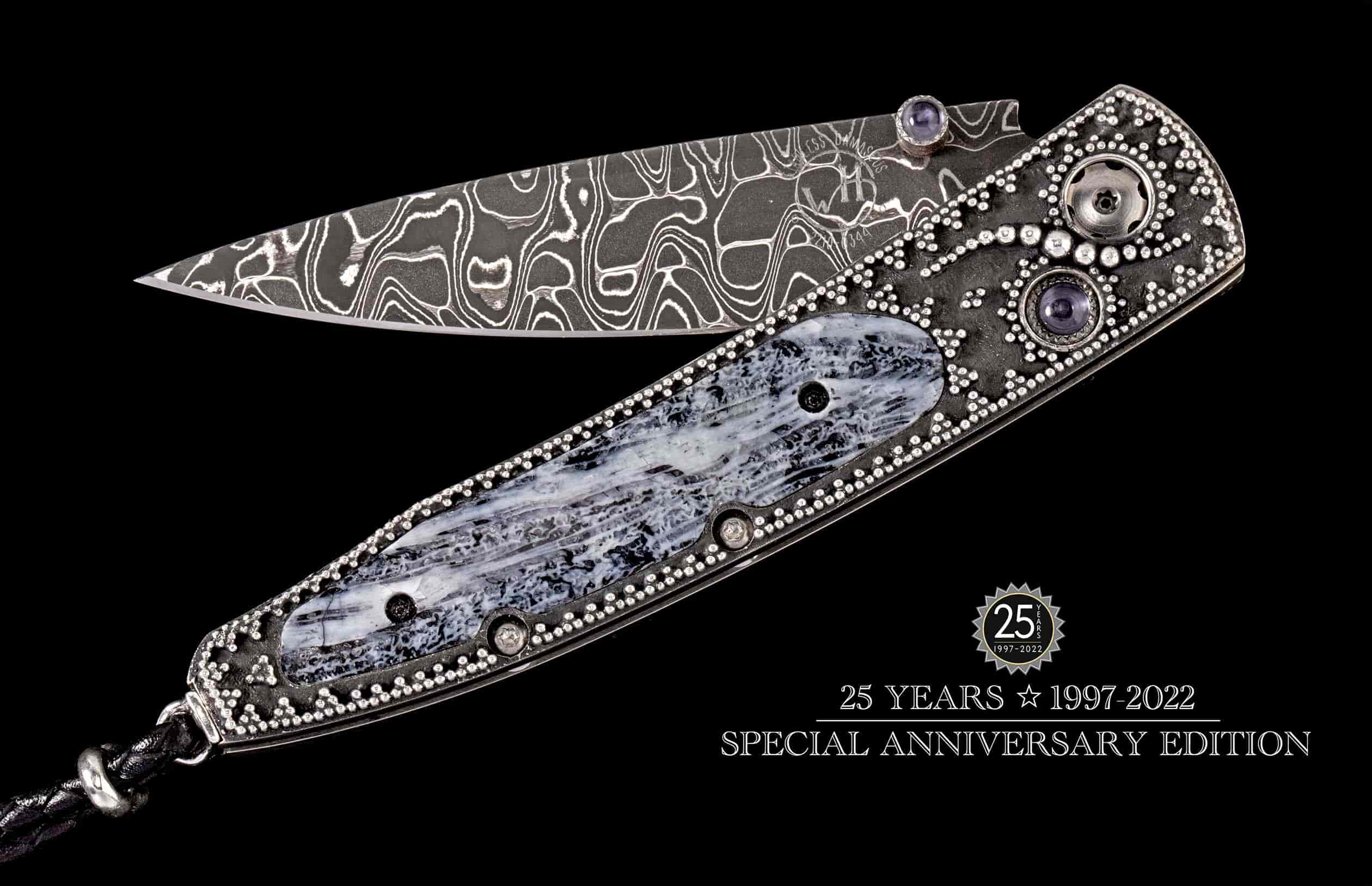Product Details
The Lancet 'Twenty-Five III' features a bolster in hand-crafted sterling silver with colored sapphires, and inlaid with a stunning piece of 100,000 year-old fossil coral. The razor-sharp blade is 'Intrepid' damascus by Chad Nichols; the one-hand button lock and the thumb stud are set with iolite gemstones. Sleek, elegant, refined, and comfortable in the hand and to the eye, the Lancet defines the essential gentleman’s folder in the modern world. The ‘Twenty-Five III’ features some of the most exotic materials, artistry, and hand-forged metals that are the hallmark of William Henry's collections; a timeless heirloom to be proudly worn and used for a lifetime before being handed-down to another generation.
Product SKU: B10 TWENTY-FIVE III
Materials
Features & Specs
One-hand button lock system
Leather carrying case
Shipped in an elegant wood presentation box
Dimensions:
- Blade 2.75" (69.9mm)
- Handle 3.63" (92.2mm)
- Overall open 6.38" (162mm)




